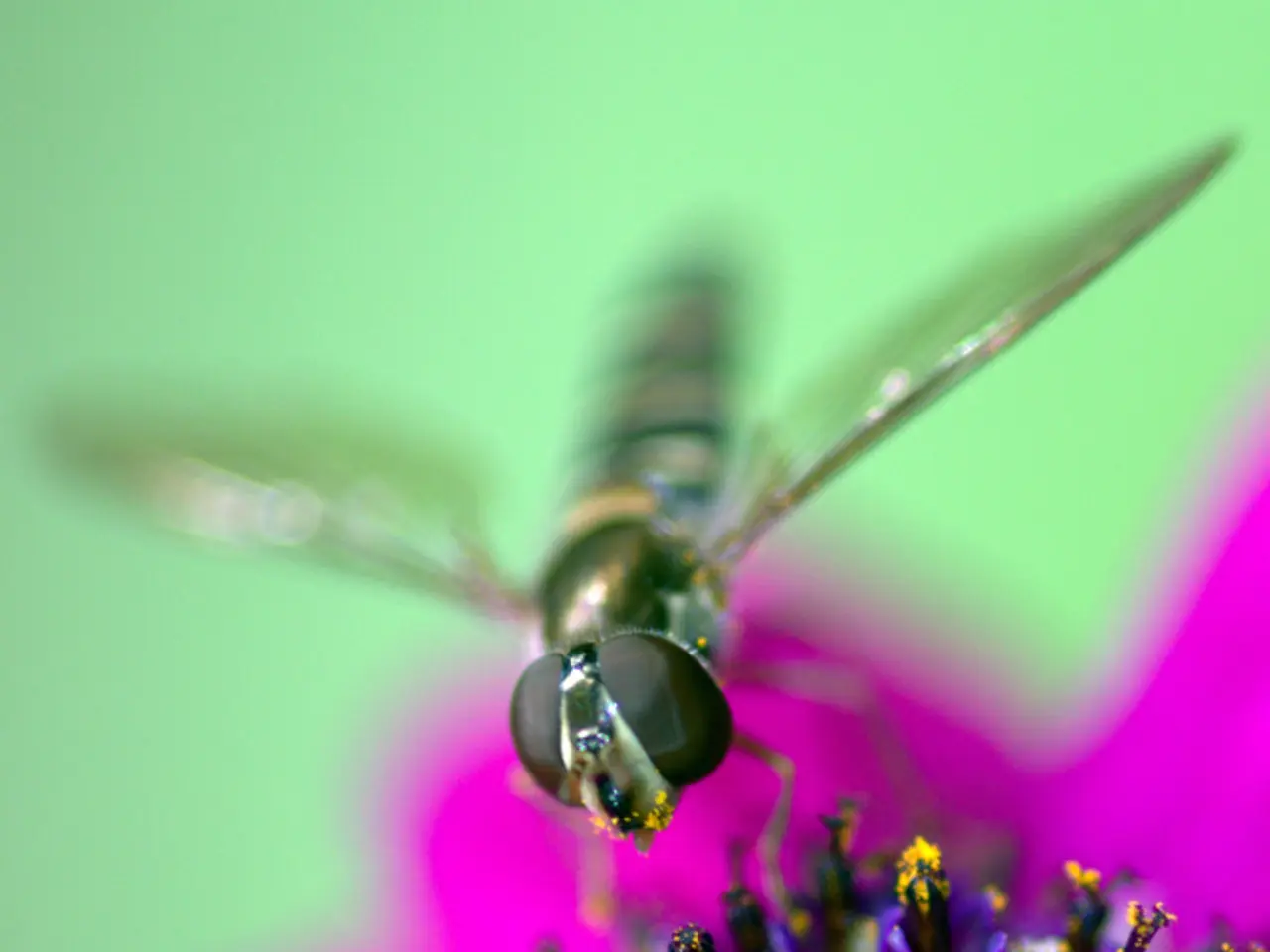Bee foraging habits and prferences in the local area
The New Bolton Center, a renowned veterinary hospital in Pennsylvania, is currently conducting a fascinating study on honeybees. Led by Laurel Redding, an associate professor of epidemiology, the research aims to shed light on honeybees' foraging preferences and contribute to their overall well-being.
The study, funded by the Carl H. Goldsmith Sustainable Agriculture Fund of Penn's Kleinman Center for Energy Policy, involves monthly sampling and analysis of what honeybees are consuming and from where. Kaitlyn Krebs, the New Bolton Center's hive manager, is responsible for collecting pollen and honey samples for the study.
One intriguing aspect of the research is the observation of the honeybee waggle dance. This figure-eight-shaped dance, consisting of alternating moves, is used by bees to communicate the location of food sources to their hive-mates. Researchers are hoping to capture this dance using in-hive video cameras, although propolis, a resinous substance produced by bees, may pose a challenge as it can cover cameras.
The duration of the waggle dance correlates to the distance of the food source, and the angle of the dance indicates the direction. This information will help researchers determine how far honeybees are willing to travel for specific nutrition sources.
Besides producing honey, farmed honeybees play a crucial role in commercial pollination for various crops, including almonds, blueberries, apples, squash, and avocados. The New Bolton Center study also aims to understand honeybees better to help keep them healthy and consider the environment and sustainability initiatives at New Bolton Center.
Cynthia Skema, a botanical scientist with Penn's Morris Arboretum & Gardens, conducts a walking survey to catalog plant life within a half-mile radius of the New Bolton Center hives. However, despite extensive search results, there is currently no information found about the preferred food plants of bees at the New Bolton Center.
The study will continue in April, May, and June next year, with the generous cooperation of locals who have allowed access to their properties for the research. The findings from this study could potentially provide valuable insights into honeybee behaviour and contribute to the preservation of these essential pollinators.
Read also:
- Peptide YY (PYY): Exploring its Role in Appetite Suppression, Intestinal Health, and Cognitive Links
- Toddler Health: Rotavirus Signs, Origins, and Potential Complications
- Digestive issues and heart discomfort: Root causes and associated health conditions
- House Infernos: Deadly Hazards Surpassing the Flames








